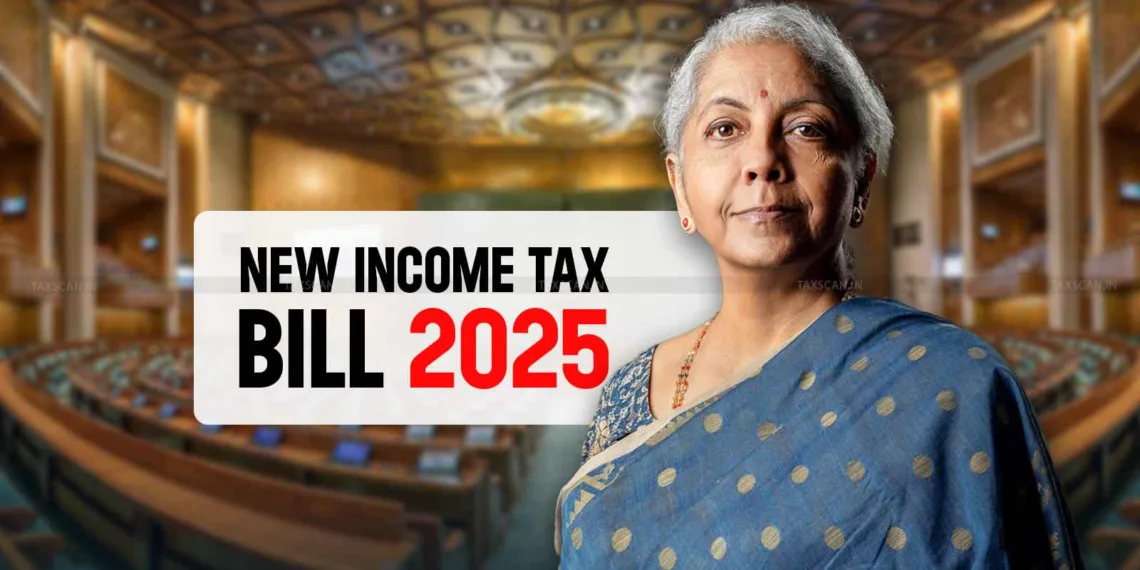In a bold move set to reshape India’s financial landscape, Finance Minister Nirmala Sitharaman has introduced a groundbreaking Income Tax Bill. This new legislation aims to simplify and modernize the country’s tax system, replacing the outdated Income Tax Act of 1961. Let’s dive into the key aspects of this bill and understand how it might affect you as a taxpayer.
Table of Contents
Key Features of the New Tax Bill That Will Impact You
The Nirmala Sitharaman Income Tax Bill brings several significant changes that are poised to impact millions of Indian taxpayers. Here are some of the standout features:
- Streamlined Structure: The new bill has been trimmed down from 823 pages to a more manageable 622 pages, with the number of sections reduced from 819 to 536. This restructuring aims to make the tax code more accessible and easier to navigate.
- Introduction of ‘Tax Year’ Concept: Gone are the confusing terms “assessment year” and “financial year.” The bill introduces a unified “tax year” concept, aligning the period of earning income with the period of paying taxes.
- Increased Standard Deduction: Salaried taxpayers have reason to cheer as the standard deduction has been raised to Rs 75,000. This change effectively makes income up to Rs 12.75 lakh tax-free, putting more money in the pockets of the middle class.
- Digital Asset Clarity: With the rising popularity of cryptocurrencies, the new bill provides clear definitions and guidelines for digital asset taxation, addressing a long-standing grey area in Indian tax law.
Major Changes in Income Tax Provisions Under the New Bill
The Nirmala Sitharaman Income Tax Bill introduces several key changes to existing income tax provisions:
Revised Tax Slab Structure
The new bill proposes a revised tax slab structure that aims to simplify tax calculations and potentially reduce the tax burden for many individuals. Here’s a quick look at the proposed slabs:
| Income Range (INR) | Tax Rate |
|---|---|
| Up to 400,000 | Nil |
| 400,001 – 800,000 | 5% |
| 800,001 – 1,200,000 | 10% |
| 1,200,001 – 1,600,000 | 15% |
| 1,600,001 – 2,000,000 | 20% |
| 2,000,001 – 2,400,000 | 25% |
| Above 2,400,000 | 30% |
Enhanced Digital Integration
The new bill places a strong emphasis on digital integration, with enhanced provisions for electronic filing and automated assessments. This move is expected to reduce paperwork, minimize errors, and speed up the tax filing process for both individuals and businesses.
Strengthened Anti-Tax Avoidance Measures
Under the revised income tax provisions, taxpayers can expect clearer guidelines on digital asset taxation and strengthened anti-tax avoidance measures. These changes aim to close loopholes and ensure a fairer tax system for all.
How Nirmala Sitharaman’s Budget Shapes the New Income Tax Landscape
Nirmala Sitharaman’s budget income tax reforms focus on reducing complexity and enhancing digital integration in tax administration. The Finance Minister has emphasized the need for a tax system that is easy to understand, comply with, and administer.
Some key aspects of how the budget shapes the new tax landscape include:
- Simplification: By reducing the number of sections and schedules, the new bill aims to make tax laws more accessible to the average taxpayer.
- Digital Push: The budget allocates resources for upgrading tax administration infrastructure, supporting the bill’s focus on digital integration.
- Ease of Doing Business: The simplified tax structure and clear guidelines on various aspects of taxation are expected to improve India’s ease of doing business rankings.

Expert Opinions and Public Response
The introduction of the Nirmala Sitharaman Income Tax Bill has sparked widespread discussion among tax professionals, business leaders, and the general public. Here’s what some experts have to say:
“The new bill is a step in the right direction. Its simplified structure and clear language will make compliance easier for taxpayers and reduce litigation,” says Rajesh Kumar, a senior tax consultant.
Many in the business community have welcomed the digital integration aspects of the bill. Priya Sharma, CEO of a tech startup, notes, “The enhanced provisions for electronic filing will save time and resources, allowing us to focus more on our core business activities.”
However, some experts caution that the transition to the new system may pose initial challenges. “While the long-term benefits are clear, there might be a learning curve as taxpayers and professionals adapt to the new provisions,” warns tax attorney Amit Patel.
Implementation Timeline and Future Implications
The Nirmala Sitharaman Income Tax Bill is set to take effect from April 1, 2026. However, before implementation, it will undergo scrutiny by a Joint Parliamentary Committee (JPC) and may be subject to further revisions.
Key dates to remember:
- Bill Introduction: February 13, 2025
- Expected JPC Report: March 10, 2025
- Effective Date: April 1, 2026
As we look to the future, the new tax bill is expected to have far-reaching implications:
- Reduced Litigation: The clearer provisions are anticipated to minimize disputes between taxpayers and tax authorities.
- Improved Compliance: The simplified structure is likely to encourage voluntary compliance among taxpayers.
- Digital Transformation: The bill sets the stage for a more technology-driven tax administration system, potentially leading to faster processing of returns and refunds.
Conclusion: A New Era for Indian Taxation
The Nirmala Sitharaman Income Tax Bill represents a significant step towards modernizing India’s tax system. By simplifying the tax code, embracing digital solutions, and addressing key pain points for taxpayers, the bill aims to create a more efficient and equitable tax environment.
As we move closer to the implementation date, it’s crucial for taxpayers to stay informed about these changes and how they might affect their financial planning. While challenges may arise during the transition, the long-term benefits of a more straightforward and digitally integrated tax system are likely to outweigh any initial hurdles.
Remember, as with any major policy change, it’s always wise to consult with a qualified tax professional to understand how these new provisions will impact your specific financial situation. Stay tuned for further updates as the bill progresses through the legislative process and prepares to usher in a new era of taxation in India.
Read more: Top 4 Pi Coin Rivals to Watch if the Mainnet Faces Another Delay
FAQ
What is the Nirmala Sitharaman Income Tax Bill?
The Nirmala Sitharaman Income Tax Bill is a new legislation introduced by India’s Finance Minister to replace the Income Tax Act of 1961. It aims to simplify and modernize India’s tax system.
How does the new bill simplify the tax code?
The bill reduces the number of sections from 819 to 536 and condenses the document from 823 pages to 622 pages, making it more concise and easier to understand.








